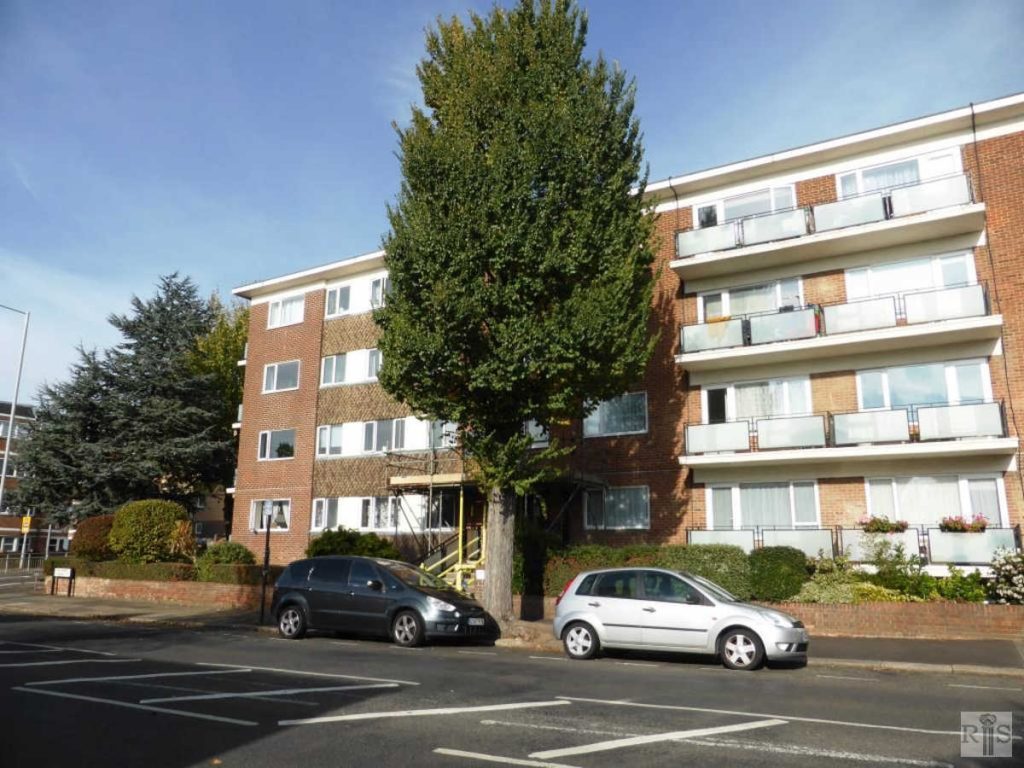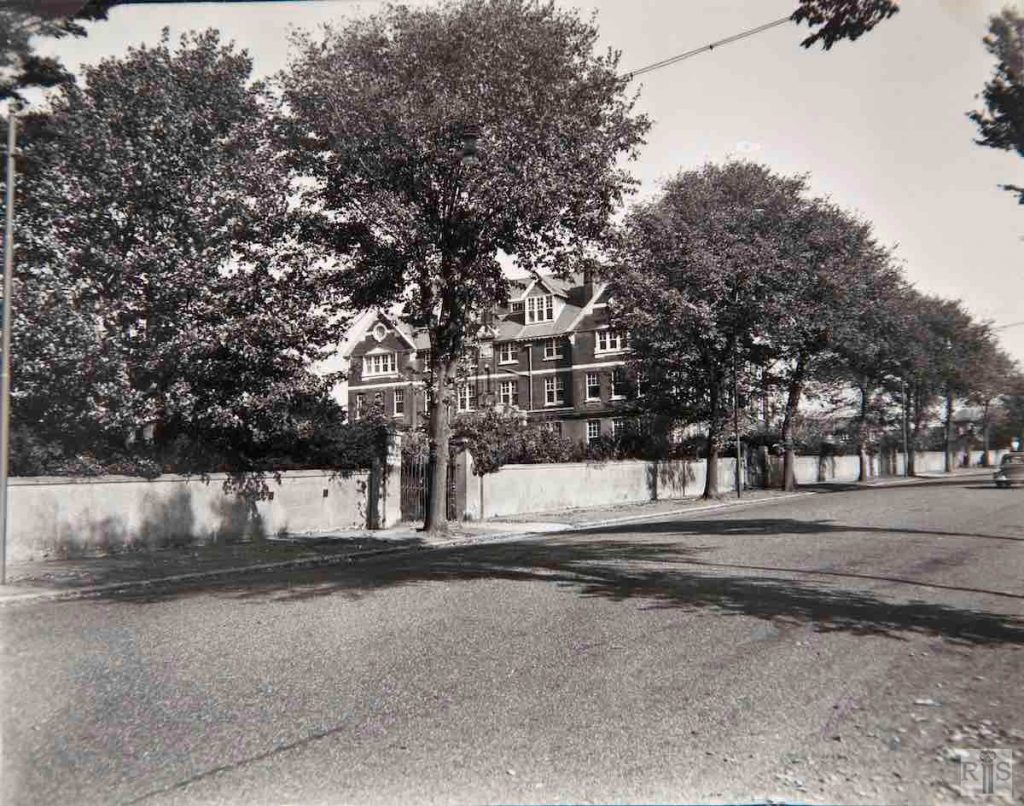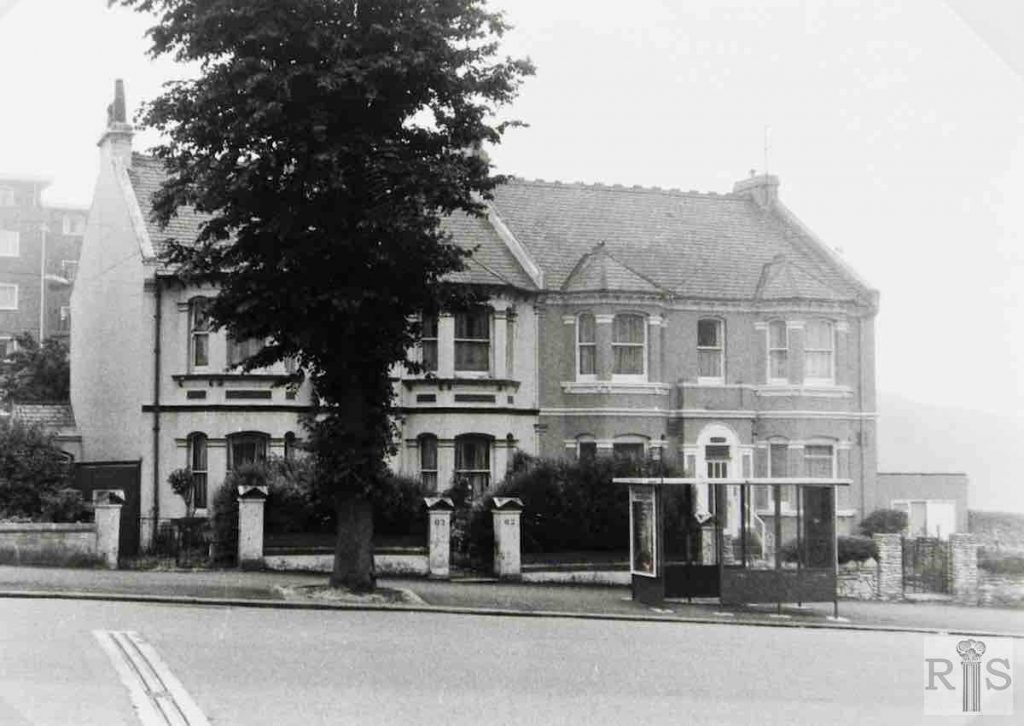
James Gray: This fine house with many impressive features stood on the east side of The Drive, at the corner of the Upper Drive and was one of the first houses built in the Drive north of the Railway. It was numbered 78. It came on to the market during the 1960s and it was in that period that these photographs were taken. It was empty for some time before demolition and replacement by the present flats known as Lincoln Court. jgc_17_019
2018: Lincoln Court flats replaced Ingleside. (Photographer: Helen Glass)
James Gray: 78 The Drive, at the corner of the Upper Drive on 10 May 1959. Demolished in 1961. The block of flats known as Lincoln Court was built here in 1962/1963. jgc_14_032
2018: Lincoln Court is still on this corner site. The wooden fencing and the bus stop have gone. The houses in the background of the original image have been replaced by a modern block of flats, just visible here, called 87 The Drive. (Photographer: Alison Minns)
James Gray: Erected in 1903, this building was always used as a school. From 1903 until 1936 it was known as Belvedere Preparatory School. From then until its demolition it was a Jewish school, called Aryeh House. An estate of Regency style houses will be built on this and the neighbouring site. The two photographs above were taken from the east side of the Upper Drive. Taken on 7 October 1962. jgc_17_026
2018: The 1960s ‘Regency style’ houses were built over the area formerly occupied by the school, just south of the junction of The Upper Drive and Dyke Road. They are still there, and the development is called The Martlet. (Photographer: Helen Glass)
James Gray: Erected in 1903, this building was always used as a school. From 1903 until 1936 it was known as Belvedere Preparatory School. From then until its demolition it was a Jewish school, called Aryeh House. An estate of Regency style houses will be built on this and the neighbouring site. The two photographs above were taken from the east side of the Upper Drive. Taken on 7 October 1962. jgc_17_027
2018: See jgc_17_026. (Photographer: Helen Glass)
James Gray: Lower down the Upper Drive was another large detached house, called the Garden House, built in 1907. Like Aryeh House it stood in ample grounds, the reason being that until 1928 this area was outside Hove, in Preston Rural, and land was cheap. Note some of the large back gardens of houses in Dyke Road. the Garden House, left, with Aryeh House being demolished in January 1963. jgc_17_028
2018: Now part of The Martlet development, between Kestrel Close and the access to the covered Dyke Road reservoir, which lies just west of the houses. (Photographer: Helen Glass)
James Gray: Across Dyke Road, in Hove, these houses, Nos 60 and 62 Upper Drive, were built about the same time as Hillcrest and can also be seen in the small 1890s photos. jgc_26_088
2018: Little has changed since the 1960s. No 62 now has rooms in the roof, the bus shelter is no longer required, as there is no regular service up and down The Upper Drive, and there are two large conifers in the front garden of No 60. (Photographer: Jane Southern)
James Gray: Three views [jgc_26_091, 092 and 093] of this road, dating from about 1895. Looking up the road to Trusler’s Windmill Inn, soon after the widening. Note the lamppost left in the middle of the road. The two houses seen are the present 60 and 62 Upper Drive, Hove. jgc_26_091
2018: The view in 2018 bears little resemblance to that in 1895. Nos 60 and 62 The Upper Drive are now obscured by the 1960s block of flats called Park Lodge. Immediately to the left of the 1895 lamppost now stands an Esso garage with Tesco shop on the corner of the junction of Dyke Road and The Upper Drive. On the left of the 2018 picture are the tennis courts in Dyke Road Park. The Dyke Park Lawn Tennis Club was established in 1929. On the right-hand side behind a high wall is the Quebec Barracks Army Reserve Centre. (Photographer: Jane Southern)



















